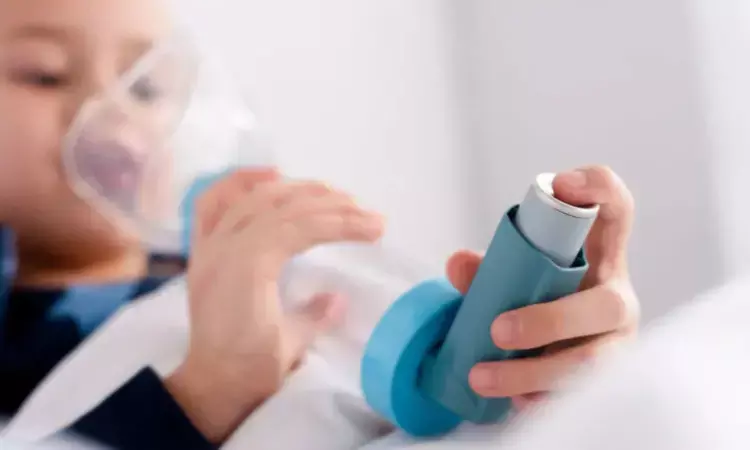- Home
- Medical news & Guidelines
- Anesthesiology
- Cardiology and CTVS
- Critical Care
- Dentistry
- Dermatology
- Diabetes and Endocrinology
- ENT
- Gastroenterology
- Medicine
- Nephrology
- Neurology
- Obstretics-Gynaecology
- Oncology
- Ophthalmology
- Orthopaedics
- Pediatrics-Neonatology
- Psychiatry
- Pulmonology
- Radiology
- Surgery
- Urology
- Laboratory Medicine
- Diet
- Nursing
- Paramedical
- Physiotherapy
- Health news
- Fact Check
- Bone Health Fact Check
- Brain Health Fact Check
- Cancer Related Fact Check
- Child Care Fact Check
- Dental and oral health fact check
- Diabetes and metabolic health fact check
- Diet and Nutrition Fact Check
- Eye and ENT Care Fact Check
- Fitness fact check
- Gut health fact check
- Heart health fact check
- Kidney health fact check
- Medical education fact check
- Men's health fact check
- Respiratory fact check
- Skin and hair care fact check
- Vaccine and Immunization fact check
- Women's health fact check
- AYUSH
- State News
- Andaman and Nicobar Islands
- Andhra Pradesh
- Arunachal Pradesh
- Assam
- Bihar
- Chandigarh
- Chattisgarh
- Dadra and Nagar Haveli
- Daman and Diu
- Delhi
- Goa
- Gujarat
- Haryana
- Himachal Pradesh
- Jammu & Kashmir
- Jharkhand
- Karnataka
- Kerala
- Ladakh
- Lakshadweep
- Madhya Pradesh
- Maharashtra
- Manipur
- Meghalaya
- Mizoram
- Nagaland
- Odisha
- Puducherry
- Punjab
- Rajasthan
- Sikkim
- Tamil Nadu
- Telangana
- Tripura
- Uttar Pradesh
- Uttrakhand
- West Bengal
- Medical Education
- Industry
AI-aided stethoscope may improve home monitoring of asthma in very young children

At present there is no objective tool that may be recommended for parents to monitor their young children's symptoms at home.
Researchers have developed an AI-aided stethoscope that may improve home monitoring of asthma in very young children.
Adults and older children with asthma can take objective measures of symptoms such as peak expiratory flow (PEF), the volume of airflow in one forced exhalation, at home. This provides a more complete picture of their disease and helps them detect asthma exacerbations or negative changes to their condition at the onset.
However, a 2022 report by the Global Initiative for Asthma (GINA) identifies continuous respiratory sounds such as wheezes, rhonchi, as the best indicators of asthma exacerbation, especially in children under 5 years of age. Assessment of these symptoms, still primarily done by doctors using stethoscopes in face-to-face visits, can be largely subjective, especially when judged by those who are not medical professionals.
Researchers conducted a six-month observational study on 149 home-monitored asthma patients of various ages in Poland. They investigated which symptoms are crucial to measure in detecting exacerbation. To what extent could an AI-aided home stethoscope support detection, especially in young children? Standard certified medical devices were used to take objective measures of certain asthma symptoms (pulse oximeters for peripheral capillary oxygen saturation, and peak flow meters for expiratory flow) in study participants over five years old but not for participants under 5 years old. For more subjective, auditory symptoms, a Conformité Européenne-certified StethoMe, an AI-based home stethoscope, recorded auscultatory sounds from standard chest points of all study participants and transferred the sound files to a cell phone app.
The recordings were automatically analyzed by an AI module and the generated results (pathological auscultatory sound intensities, heart rate, respiratory rate, inspiration-to-expiration duration ratio) were displayed in the app. All data were analyzed by physicians via an online platform to identify exacerbation occurrences. Ultimately, results suggest that, while taking multiple measures is preferable, AI analysis of home stethoscope recordings alone can efficiently detect asthma exacerbation in patients of all ages, including children under 5 years old.
What We Know:
Asthma is the most common chronic childhood disease and is prevalent in adults as well. Although asthma can be controlled with medication, the disease can worsen, and timely identification of asthma exacerbation is essential for proper management and symptom relief. One way to identify exacerbation is by measuring peak expiratory flow (PEF). Home monitoring tests for PEF are available for adults and school-aged children, though none are currently recommended for children under five years of age. Assessing more subjective, auditory symptoms such as coughing and wheezing, while recommended, is less reliable when done at home.
What This Study Adds:
The results of this study indicate that, while combining multiple measurements of asthma is ideal, the parameters measured by the StethoMe AI-aided home stethoscope can help detect asthma exacerbation more effectively than peak expiratory flow measurements. It can be a useful tool for optimizing patient-doctor collaboration via telemedicine. For children under 5, an AI-aided home stethoscope could significantly facilitate asthma monitoring by their parents and caregivers.
Reference:
Andrzej Emeryk, Eric Derom, Kamil Janeczek, Barbara Kuźnar-Kamińska, Anna Zelent, Mateusz Łukaszyk, Tomasz Grzywalski, Anna Pastusiak, Adam Biniakowski, Krzysztof Szarzyński, Dick Botteldooren, Jędrzej Kociński and Honorata Hafke-Dys, Home Monitoring of Asthma Exacerbations in Children and Adults With Use of an AI-Aided Stethoscope, DOI: https://doi.org/10.1370/afm.3039.
Dr Kamal Kant Kohli-MBBS, DTCD- a chest specialist with more than 30 years of practice and a flair for writing clinical articles, Dr Kamal Kant Kohli joined Medical Dialogues as a Chief Editor of Medical News. Besides writing articles, as an editor, he proofreads and verifies all the medical content published on Medical Dialogues including those coming from journals, studies,medical conferences,guidelines etc. Email: drkohli@medicaldialogues.in. Contact no. 011-43720751


